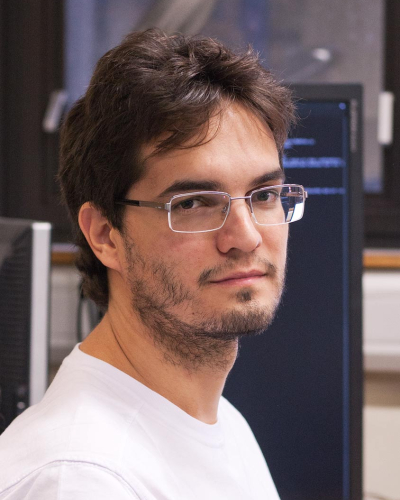
Vítor Lopes dos Santos
Vítor graduated in Electrical Engineering and earned a Master’s degree in Computer Engineering from the Federal University of Rio Grande do Norte (Brazil). He later completed his PhD in Neuroscience (2011–2015) at the university’s Brain Institute, working with Adriano Tort and Sidarta Ribeiro (CAPES funding), as well as Rodrigo Quian Quiroga (Science Without Borders funding). During his PhD, he developed new methods to analyse neuronal cell assemblies in large populations (Lopes-dos-Santos et al., 2011; 2013) and to study temporal patterns in spike trains and EEG/LFP signals (Lopes-dos-Santos et al., 2015; 2018).
Vítor joined the Dupret Group at the MRC Brain Network Dynamics Unit in Oxford as an Investigator Scientist in November 2015. Building on his previous expertise in advanced data analysis, he developed strong experimental skills in state-of-the-art electrophysiological recordings and optogenetic approaches. His research combines these complementary tools to investigate hippocampal physiology.
Beyond contributing to multiple studies within the Dupret lab and through international collaborations, as well as training several lab members in both data analysis and basic electrophysiological recording techniques (including the full co-supervision of PhD students), Vítor has played a leading role in several key research projects. These include a study on theta cycle-to-cycle variability in terms of nested oscillations (see cover below), revealing how different hippocampal circuits contribute to distinct stages of a spatial memory task (Lopes-dos-Santos et al., 2018); a detailed characterization of electrophysiological signatures across hippocampal layers, linking network patterns to the activity of different cell types during wakefulness and sleep (Lopes-dos-Santos et al., 2025); and a study co-led with Manfredi Castelli that identified two distinct sharp-wave ripple events, described in terms of their underlying generating currents and differential contributions to sleep reactivation (Castelli & Lopes-dos-Santos et al., 2025).
Vítor continues to explore hippocampal physiology, focusing on how different regions of the hippocampal formation interact to form and retrieve memory traces.